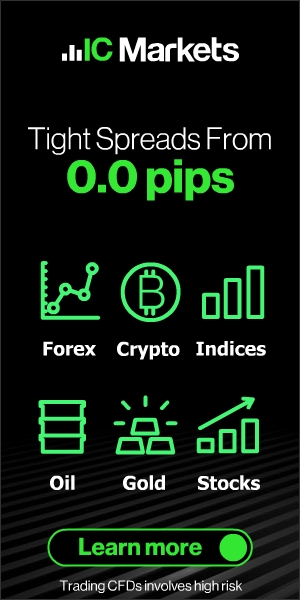
The Impact of Consumer Spending on Forex Markets
- Jonny Smith
- August 2, 2023
- Forex Trading For Beginners
- Best_forex_broker, ecn, ECN_Forex, Froex_Demo_Accounts, strategies
- 0 Comments
Introduction
Life is filled with cause and effect scenarios, isn’t it? You eat too much candy, you get a toothache. You forget your anniversary, you end up in the doghouse. Just like these examples, a country’s economy is influenced by a myriad of factors. One key player in this economic theatre is consumer spending, and it has a pretty noteworthy role. But did you know that consumer spending doesn’t just affect a country’s economy? It also plays a pivotal role in the world of Forex markets. This article will guide you through this fascinating interplay, so buckle up!
Understanding Consumer Spending
So, what’s consumer spending all about? Well, it’s the amount of money households spend on goods and services. From groceries and gasoline to concerts and vacations, these all come under consumer spending. As you might imagine, when you put together the spending power of everyone in a country, that’s a heck of a lot of money. And where there’s money, there’s influence.
The factors that push this spending merry-go-round are numerous. Income, consumer confidence, interest rates, you name it. These variables determine whether consumers are reaching for their wallets or tightening their purse strings. It’s a big piece of the economic puzzle because, in many countries, consumer spending accounts for more than two-thirds of the economy. Now, that’s not a player you’d want to bench!
Consumer Spending and Economic Health
Consumer spending isn’t just about buying stuff; it’s like a heart rate monitor for the economy. When spending is high, it means people are confident about their financial situation and the state of the economy. This confidence can have a multiplier effect, driving more spending, business growth, and job creation.
But how do we keep tabs on this invisible, omnipresent force? Through economic reports, my friends! Government agencies and private institutions gather and analyze data on consumer spending. It’s like taking the economy’s temperature to see if it’s in good health.
How Consumer Spending Impacts the Forex Market
Now that we’ve got a handle on consumer spending, let’s delve into the really juicy stuff – how it impacts Forex markets.
Imagine a world where consumer spending in a country is rising. Businesses are thriving, the economy is buoyant, and this can often lead to inflation. Central banks step in to control this inflation, typically by hiking interest rates. Higher interest rates mean higher returns for holding that country’s currency, which can boost its value on the Forex market.
Let’s take a real-world example. Say consumer spending in the US is on an upward trend. This could lead to an appreciation of the US dollar against other currencies on the Forex market. Therefore, keeping an eye on consumer spending can give Forex traders a sense of where a currency is headed.
Monitoring Consumer Spending for Forex Trading
If you’re a Forex trader, or aspiring to be one, monitoring consumer spending should be in your toolkit. Reports such as the Retail Sales Report or Personal Consumption Expenditures in the US can provide vital clues about consumer spending trends.
Imagine having a crystal ball that could hint at future Forex market trends. Well, these reports are as close as it gets! If consumer spending forecasts show a rising trend, it could indicate potential appreciation of that country’s currency. So, don’t just watch the markets, watch the shoppers too!
The Global Perspective: Consumer Spending and Forex Markets
As they say, no man is an island, and in today’s interconnected world, this rings true for economies too. Consumer spending trends in one country can send ripples across global Forex markets.
For instance, if consumer spending in a major economy like the US or China is booming, it can impact currencies worldwide. Forex traders who keep their finger on the pulse of global consumer spending trends can better navigate these market waves.
Consumer Spending, Forex Trading, and COVID-19: A Case Study
Now, let’s take a look at a case study that shook the world – the impact of COVID-19. The pandemic struck a major blow to global consumer spending, with lockdowns, job losses, and a general climate of uncertainty. This had a profound impact on Forex markets, with unpredictable swings in currency values.
Forex traders who kept a close watch on these spending trends could identify and react to market changes more effectively. Despite the challenges, those who could read the consumer spending tea leaves had an edge.
The Future: Consumer Spending and Forex Markets
Looking forward, consumer spending will continue to be a significant player in Forex markets. Advancements in data collection and analysis will provide Forex traders with even more precise indicators to guide their trading strategies.
As we navigate the post-COVID economy, keeping an eye on consumer spending trends will be more crucial than ever. So, whether you’re a seasoned Forex trader or just dipping your toes in, make consumer spending part of your strategy.
Conclusion
In the grand theatre of economics, consumer spending is a lead actor, influencing not just economies but also Forex markets. By monitoring consumer spending trends, Forex traders can gain valuable insights to navigate the market waves. So, next time you’re checking your Forex charts, remember to also check the shopping cart trends!
In the world of Forex trading, knowledge is power. And understanding the impact of consumer spending on Forex markets is a powerful tool indeed. So, keep learning, keep trading, and most importantly, keep spending!








